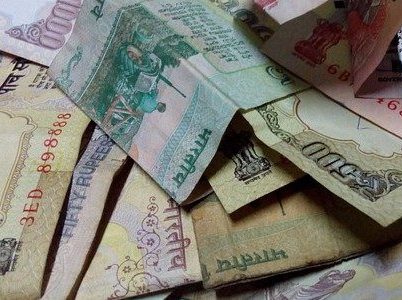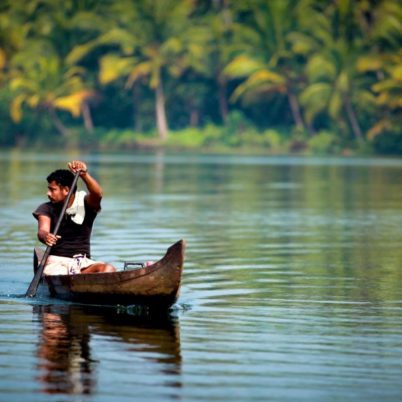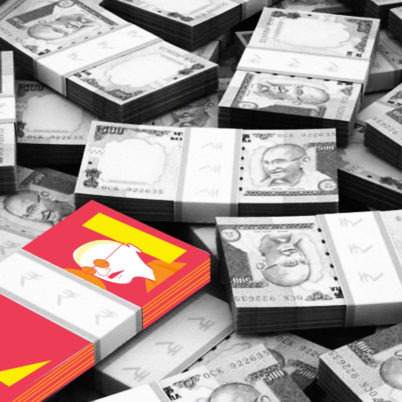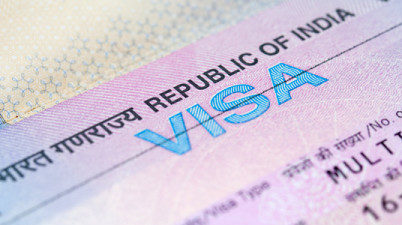‘Get India Ready’-Guide
There are many questions our guests often ask before planning a trip to India, but not all are worth an entire article for our Discover India Section. In the following ‘India Survival Guide’ we are trying to answer as many of those as possible. That covers money exchange, getting a sim card and wifi, what to pack, dressing appropriately or avoiding giving offence in India and more. It is basically Getting ready to visit India. If we missed the answers to your questions, get in touch with us.
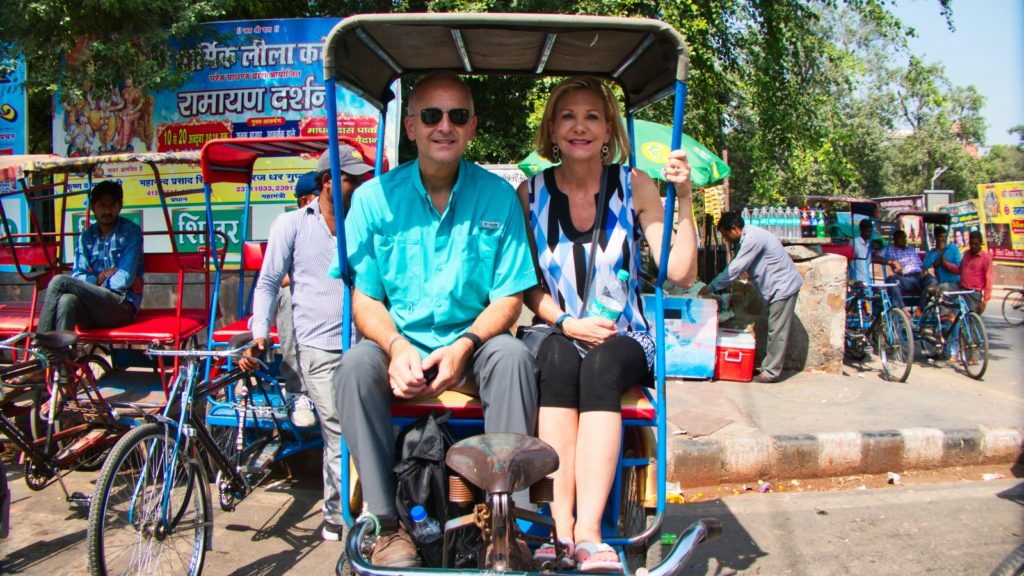 Great tips for planing a trip to India
Great tips for planing a trip to India
Should you carry money with you or withdraw it in India?
India is not a complete outback country. You can widely withdraw or exchange money. However, for your travels we would recommend a combination of the following:
Carrying a reasonable (but not too large) amount in hard currency
USD, CAD, GBP, EUR, AUD, SGD etc are very easily exchangeable. Banks, travel agency desks, and hotels often exchange foreign currency and give you cash in INR. This is especially true for big cities. Tourist towns will have a money exchange option on every street. Hotels or travel agency desks will usually offer a better rate than banks. Sometimes there are also jewellery shops doing money exchange but those options are not so obvious to a traveller. So ask the receptionist or driver for the best options around.
Also, if you are shopping or paying hotel extras they often accept foreign currency (7 out of 10 instances). The airport only exchange a small amount of money as rates are the worst there (100 USD/EUR ideally, not more).
Withdrawing with your ATM/Debit/Credit Card
ATMs are very easy to find now, even small towns have multiple ATMS. If this is your first trip to India, this is certainly a safer option, in fact most widely used.
Remember – Indian ATMs charge a fee of INR 100 – 150 (USD 3/ EUR 2 approx)) per transaction. In addition, your home bank could charge you a fee.
The maximum amount Indian ATMs discharge is between INR 15000 – INR 25000 at a time (USD 300/450 – EUR 250/350). If possible, always carry a back-up card. Per withdrawal you can only get INR 10000 but you can go again after that. Often our guests have been in a situation where one card would not work at any Indian ATM. This is because smaller regional banks don’t accept International cards. Go to the national banks like HDFC, Kotak, ICICI, IndusInd or YES Bank or international ones like HSBC or CitiBank. It’s recommended to withdraw larger sums at one go.
Travellers Cheques
They seem to be waning in popularity. However, they can be exchanged fairly easily. Some hotels accept them. If not you can find a nearby bank or an authorised agent.
Credit Card Payment
Credit cards (outside of big cities) find very limited acceptance. Upper-end hotels and restaurants will accept credit cards.
Sometimes (and often in Kerala) shops will allow you to swipe your credit card to ‘withdraw’ money with a small fee. They make a fake purchase of for e.g. INR 5000, charge you a small fee and give you the cash.
Carry your credit cards, they can come in handy. But understand they will not be accepted widely.
 Since Indian Rupees are a rather weaker currency you will have lots of big notes in your pocket. Enjoy!
Since Indian Rupees are a rather weaker currency you will have lots of big notes in your pocket. Enjoy!
Should you get an Indian SIM-card? How is the internet connectivity in India?
Internet connectivity while travelling within India is fairly easy to find but can’t be taken for granted. You cannot expect smaller hotels/hostels to have wifi. However, in general you will not be too far away from an internet or wifi source. If you feel the need to be constantly connected you can get an Indian SIM card with data volume.
Purchasing a SIM card in India/buying an inexpensive handset
Firstly, it is not absolutely necessary to have an Indian number while travelling. Having said that it is useful to have a phone and an Indian SIM card. Also for us to reach you any time in case there are any issues.
You need the following to get a SIM card (please carry beforehand):
- A passport sized photograph (ideally with 2 copies)
- Copy of your passport
- Copy of your visa (very important)
Prepaid (pay as you go) SIM cards are available everywhere. Typically each street would have a store that sells SIM cards. You will not miss the ‘Vodafone/Cell phone recharge/Airtel’ boards. Just tell them that you want to purchase a new SIM card.
The hotel reception will always be able to point you in the direction of the closest store to get a SIM card. If you first arrive in Delhi, you can purchase a SIM card and an inexpensive handset at the airport itself.
A SIM card usually is free or costs under INR 100. Recharging it with credit worth INR 500 is sufficient. If you do not have a phone, basic phones can be purchased for about INR 2000 (USD 40, euros 30).
Be prepared that it can take a couple of hours until the SIM card gets activated.
Planning a trip to India with a smartphone
If you have a smartphone, and intend on carrying it to India, it comes in handy. Your smartphone can become your wifi device and you can send e-mails back home or to us when you are in a wi-fi area. Some of our guests even subscribe to an international roaming data plan.
We’ve had a lot of guests that did not bother buying an Indian SIM card, as long as they could send/receive emails from their phone. It honestly works like a charm and helps us to provide you with our best service.
Internet connectivity
Most destinations have plenty of wifi cafes (it is usually bait to bring customers in) and you can connect and send and receive e-mails.
Cyber cafes are easily available too. It would be safe to assume that you would be close to an internet connection virtually every other day. However, the wifi connection might not always be a strong one or many people use it at the same time. Skype or streaming movies is not always possible.
To summarize
Having an Indian SIM card is useful, but you can circumvent it. In our ‘Get India ready guide’ we would suggest having an internet device, especially a smartphone with international roaming or an internet device, like your tablet. These are the most useful to send and receive e-mails.
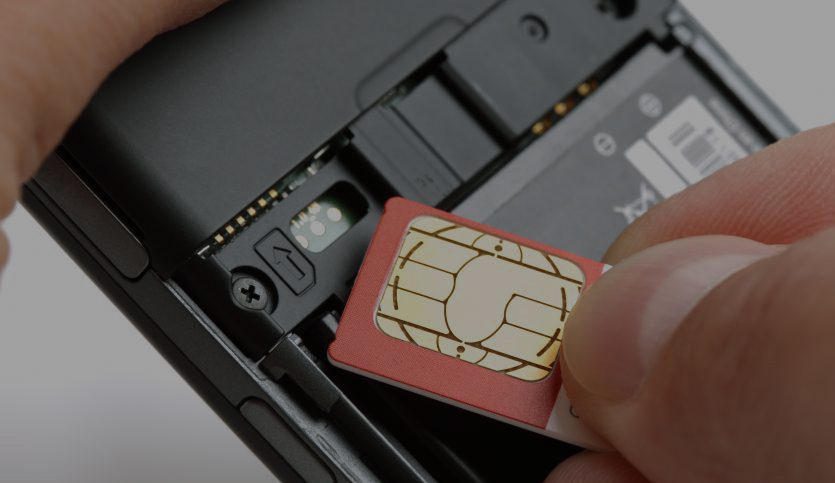 Local SIM cards are easy to obtain and make your life easier in a foreign country
Local SIM cards are easy to obtain and make your life easier in a foreign country
What should you pack for your trip to India?
This is not a comprehensive checklist. Nonetheless, it contains some useful pointers that might come in handy while you pack.
Travel lightly and if possible carry a backpack. However, a suitcase will not be a problem.
- Sunscreen/Sunblock is important. Between October and June we get long days of sunshine with hardly any rain. While you can buy an extra tube of sunscreen in India, at times it is hard to find and you do not have a lot of options. It is also expensive
- Sunglasses, hats, caps, light cotton scarf for the summer
- Think cotton and light fabrics. Pick your most comfortable and light wear
- For a two week trip you want to try and carry about 7-8 pairs of T-shirts, more so if you are going to visit Mumbai, Goa or Kerala. As it can be humid you tend to sweat a lot
- Laundry is very easy and get be done through all hotels so you won’t need to bring your own detergent. You can always buy cotton t-shirts or cotton kurtas in India
- Electronics, Ipods, Ipads can be useful; wifi connection is fairly easy to find. Remember to carry a converter for the charging point. Try and avoid carrying a laptop.
- Unless you are heading to nightclubs in Delhi and Mumbai, you will not have too many opportunities to party. So avoid or carry only one pair of party clothes. Goa is very relaxed with what you wear to a party but you can’t wear short dresses everywhere. Especially if you’re a female. Thus, this would be a guide to solo female travel in India.
- It is wise to carry a couple of rolls of toilet paper. Invariably hotels have toilet paper and can be purchased easily. Trains will not have toilet paper, or if you stop at restaurants on the highway. You can also buy toilet paper at pharmacies in India.
- A light pullover and scarf for A/C coach train or bus travel is recommended, as the air conditioning can be quite strong and cold.
- Basic toiletries are very easy to restock in India.
- Personally, we like to carry a small or thin towel when travelling. All hotels will give you towels. At less expensive hotels, towels can be old and stained.
- Hand sanitizer is handy, India can be dusty.
- Small case of medicines, for an upset tummy, motion sickness, head ache etc.
If travelling between late-November to late-February (Winter in India):
- North India, in particular Delhi, Agra, Varanasi, Rajasthan and the foothills of the Himalayas, can get pretty cold in the winter. Mid-December to late-Jan are the coldest. Night time temperatures can drop to 8 to 12° C (50° F). Indian hotels do not offer any heating
- Do carry some warm clothing if travelling during these months. Light gloves, something to cover your head and ears, a jacket/pullover
- Day time temperatures would still be pleasant and the sun is always out towards the afternoon
- In South India, the hill stations of Munnar and Thekkady can get cold at night (again 8 to 12°C (50° F) at night)
- If you travel to the very north into the mountains you will need to be prepared for snow from November until end of March
If travelling between mid-June to mid-September (Monsoon in India):
- Rainfall in Mumbai, Goa and Kerala can be quite heavy. Carrying an umbrella and rain coat is recommended
- Rainfall in the North of India is not as heavy. It is still good to carry both an umbrella and rain coat.
- Clothes and floaters that can dry quickly are a must
- A mosquito net and mosquito spray. Good quality mosquito nets are hard to find in India
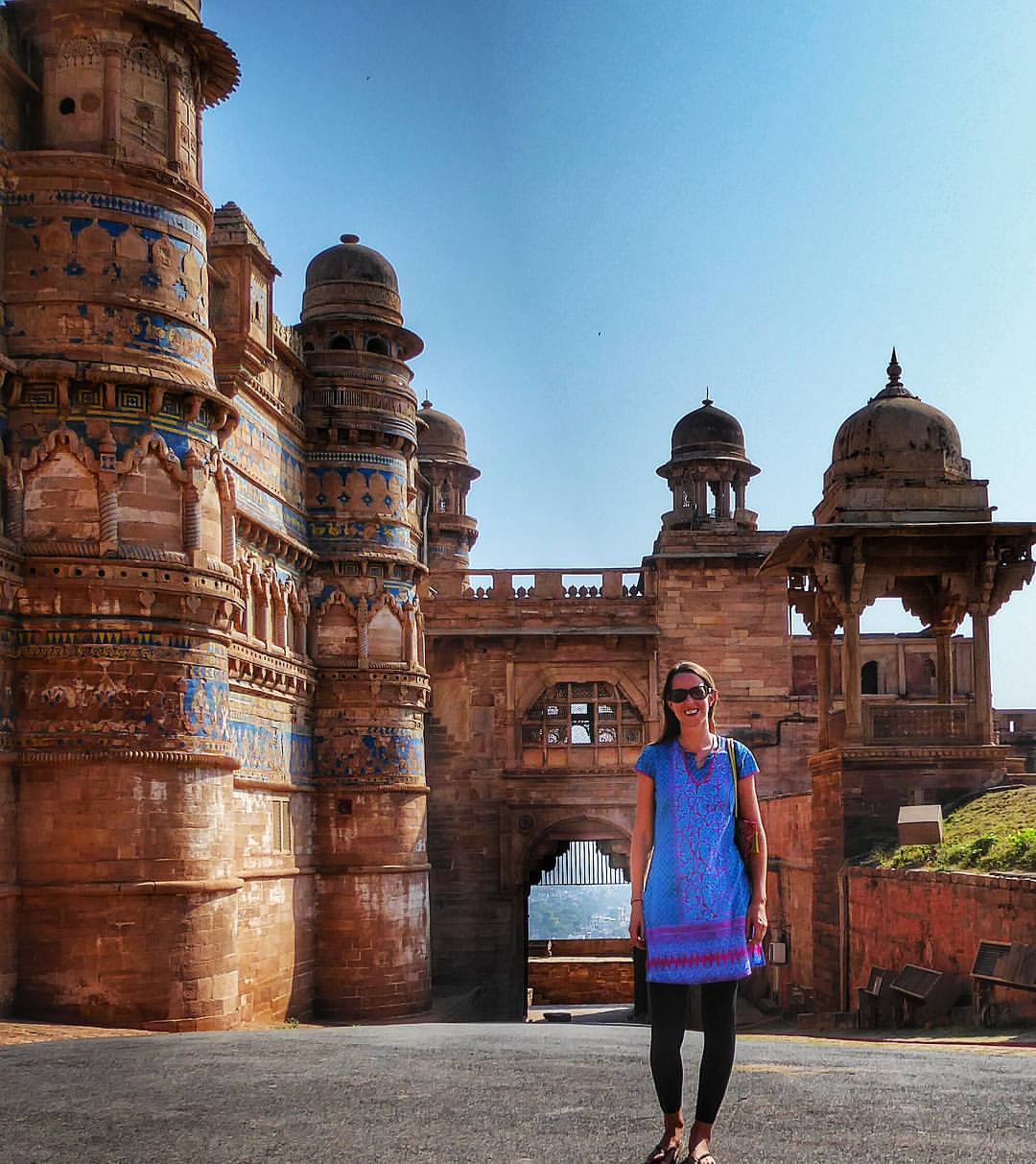 Anna from the travel blog Global Gallivanting loved to wear the typical Indian kurtas.
Anna from the travel blog Global Gallivanting loved to wear the typical Indian kurtas.
How can you dress appropriately in India?
As a woman:
- In general try to stick to comfortable t-shirts and pants or skirts that are about knee length and longer. You can wear shorter shorts and skirts if you are travelling in a group or with a guy. Strongly avoid the same if you are travelling alone or in smaller towns
- Tank tops are best avoided. Showing your legs is still alright, not your tummy. As far as possible avoid low neck and transparent t- shirts
- Sleeveless shirts again don’t get a strict no but apply the same rule as for short shorts
- Goa and the beaches of Kerala you can wear just about anything you would wear to a beach back at home. At other beaches in the country, we would suggest to avoid bikinis or at least wear a shirt and shorts above it.
As a man:
- A man can mostly wear anything without attracting a lot of attention. Longer shorts are advisable, also to protect you from the sun. But Indians can get curious and start laughing or staring if they see men in very short shorts. (Does not apply to Goa)
In places of worship both men and women need to dress moderately and discreet, i.e. be covered at least with a short sleeve shirt and long pants. Usually they will give you a little robe to wear over your clothes. A small tip is expected. In Sikh Temples both genders need to cover their heads. Shoes need to be always removed before entering a Hindu temple. This applies when you enter any Indian home for that matter. In general temples are more casual when it comes to dressing rules than mosques.
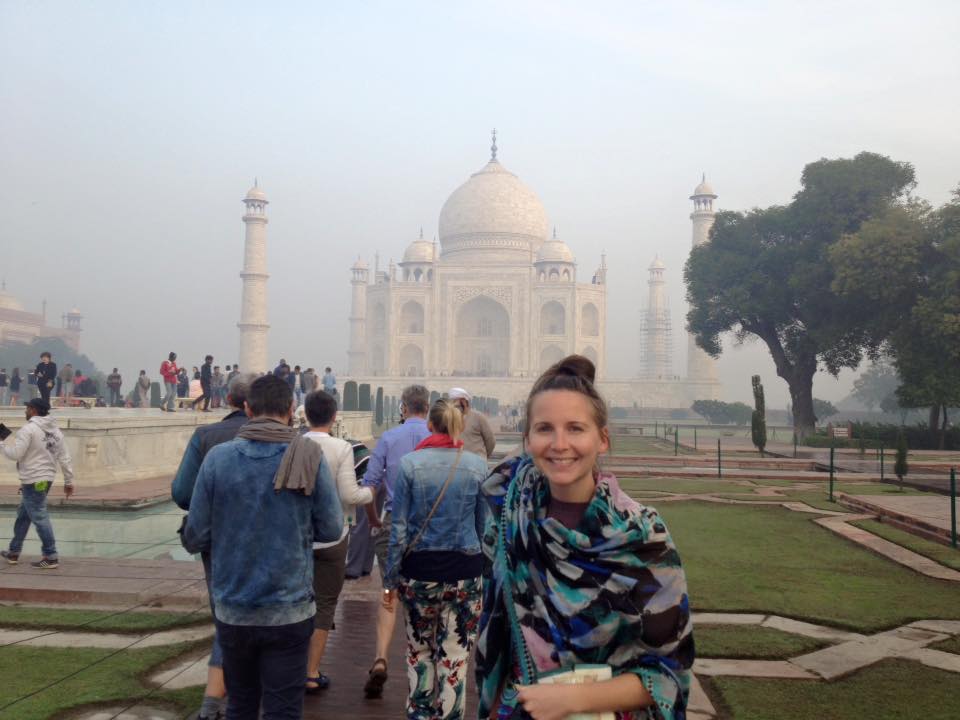 How to dress appropriately in India
How to dress appropriately in India
What is the Indian mentality like?
- Apart from the touts, Indians are nice and friendly people
- They are helpful, they are curious, they are ever smiling, and they like to talk
- If you spot a cute kid, it is OK to take a picture, usually they will not refuse. They will smile back. Show them the pictures on the camera. They will be happy and excited
- It is also OK to ask permission to photograph women in saris
- Do not hesitate to engage in conversations with Indians you meet. Once comfortable they love to talk. Often on a train you will make some Indian friends
- Indians love to eat and offer food to their guests. Of course you don’t have to eat everything but try to accept the offer whenever you feel comfortable, especially when you are joining in a conversation with the people
- You will find many Indians stare at you, especially young men and women. The main monuments of the country are also visited by people from small villages that rarely see ‘white’ people. As long as you don’t feel like in a dangerous situation the best advice is to accept and ignore
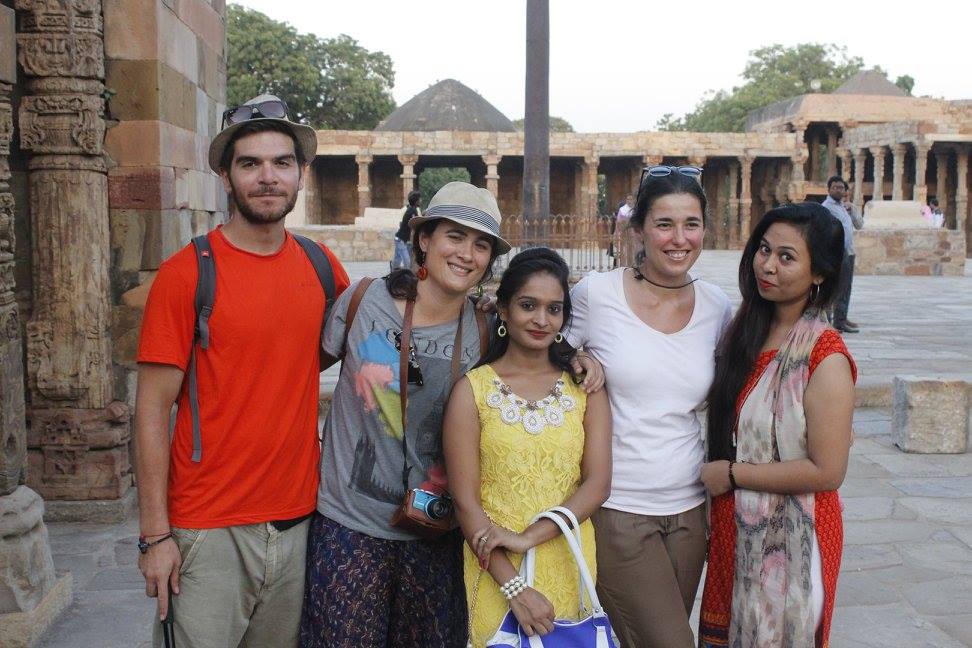 Many Indians want to take photos with you. Just smile and go with the flow!
Many Indians want to take photos with you. Just smile and go with the flow!
What to do when India annoys you?
- You will face constant aggression of ‘my friend, please buy this, look at that’ etc. in India. More so in the North. Be on your guard and you can always say a polite no
- Unless you are really sure about the reputation of a store, avoid buying things and asking the hotel to parcel and ship it back home. They will offer you this time and time again. We’ve had a bunch of guests e-mail us that the package never arrived
- Always count your change, often at Monument entrances the officials will try and fleece tourists by returning less change. At all instances, count your change
- You will be asked this A LOT, ‘Madam/Sir, please can we take a picture with you’. It is always innocuous, perfectly safe and just curious Indians, but our guests say it does get annoying when you are asked to do it 50 times across the span of your trip
- Needless to say be very careful with the water you drink – bottled or filtered water is favourable
- A lot of our guests completely avoid non-veg food in India, thinking it is unsafe. In a visibly nice restaurant or homestays it is OK to eat meat. Chicken is a better option because it’s widely consumed and more likely to be fresh. But, again be your own judge.
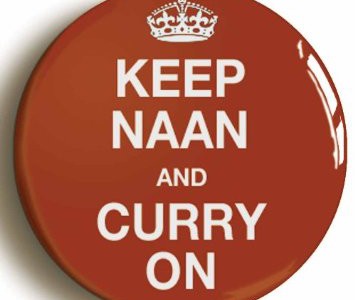 Go with the flow and let yourself be mesmerised by the chaos rather than annoyed
Go with the flow and let yourself be mesmerised by the chaos rather than annoyed
Do you need Vaccinations for India?
- Different sources have different recommendations for vaccinations for India. We don’t want to give medical advice as we don’t feel competent enough. Always talk to your doctor about it and get what is advised by official sources
- From interacting with our guests, we know that some of our guests get all the recommended vaccinations while about 25-30% of our guests (and from western countries) take no or very minimal vaccinations. It is more of a personal choice!
- It is good to know that Malaria risk is only high during the monsoon months (June to Sept). The pills for prevention have very strong side effects but can be brought along for the case you get the symptoms. In the big cities you would be in good hands at the private hospitals
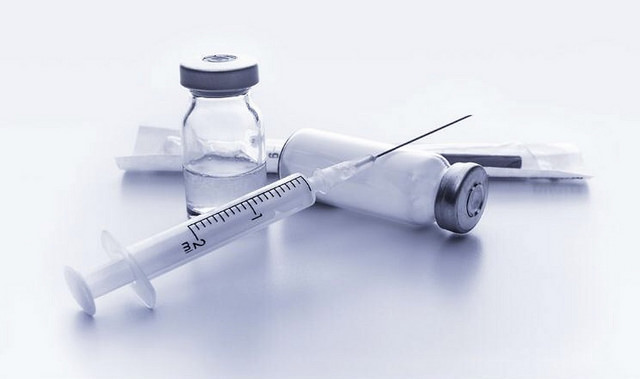 Talk to your local doctor about vaccinations
Talk to your local doctor about vaccinations
Are there many Mosquitoes in India?
- If planning a trip to India during the monsoons, (June to Sept), mosquitoes can be a menace. We recommend carrying a mosquito net
- Some hotels provide a mosquito net, some do not. It is usually difficult to buy mosquito nets in India
- Odomos is a very popular and effective mosquito repellent that can be purchased easily at pharmacies in India
- Mosquito annoyance is much lower in non-monsoon months. Especially in the North
- In Kerala, in and around the backwaters, mosquitoes can always be an annoyance
- A mosquito does not always mean malaria or dengue. If you’re bitten, don’t panic!
- The fabulous Yab Yum Resort in Goa has written a fantastic article on mosquitoes and Malaria. Check it out!
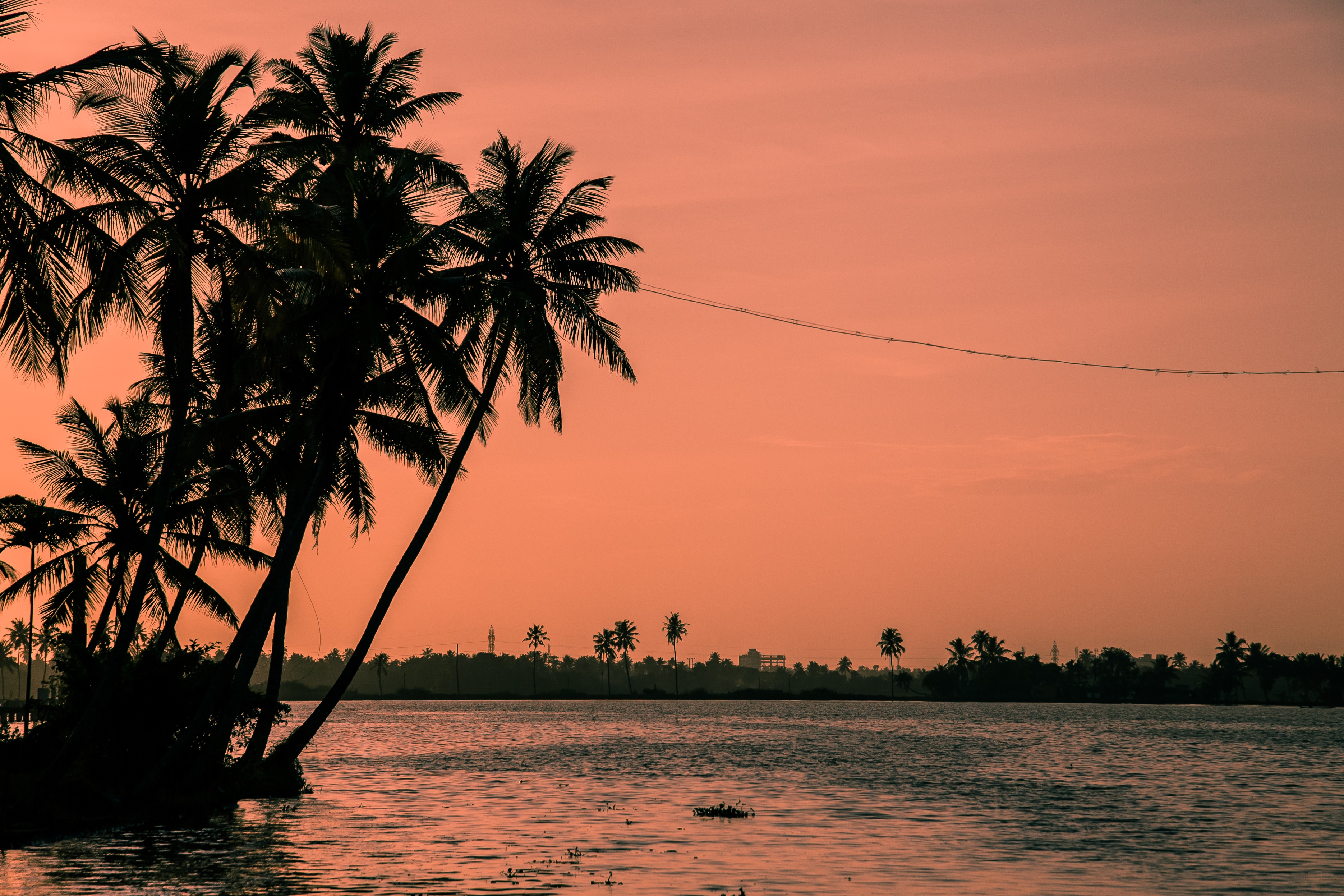 The Backwaters are beautiful but unfortunately have mosquitoes all year around.
The Backwaters are beautiful but unfortunately have mosquitoes all year around.
Will India Someday be in touch with you during the trip?
- We always love/try being actively in touch with our guests during the trip. You will probably receive phone calls or e-mails from us. Especially from your travel consultant or Aaliya, our booking superhero!
- Contact us at any instance during the trip. Our contact details are mentioned on the top of each Booking Voucher (it’s hard to miss)
- When possible we love to meet our guests in Mumbai. It’s our home city and where our office is based
- Even if all is going smooth and you are enjoying your time in India, we love to have quick updates from our guests. (Hint: think of us when you are e-mailing family back home)
With India, one has to be patient. There are times it can be overwhelming, but in the end it all falls in place. As they say, ‘You love and hate India, in the end the love is far stronger’. Plan your trip with us to always have a strong travel partner on your side for any questions or issues before or during the trip. We will do our best to make your trip a memory of a lifetime!
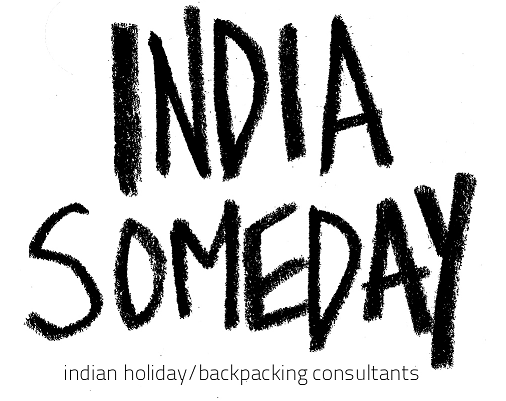 Get India ready guide
Get India ready guide
Everything you need to know about India is here We have tried writing about everything you may need help with for your trip to India, If you need help in planning a trip to India Get in touch with us to to plan your trip of a life time.







